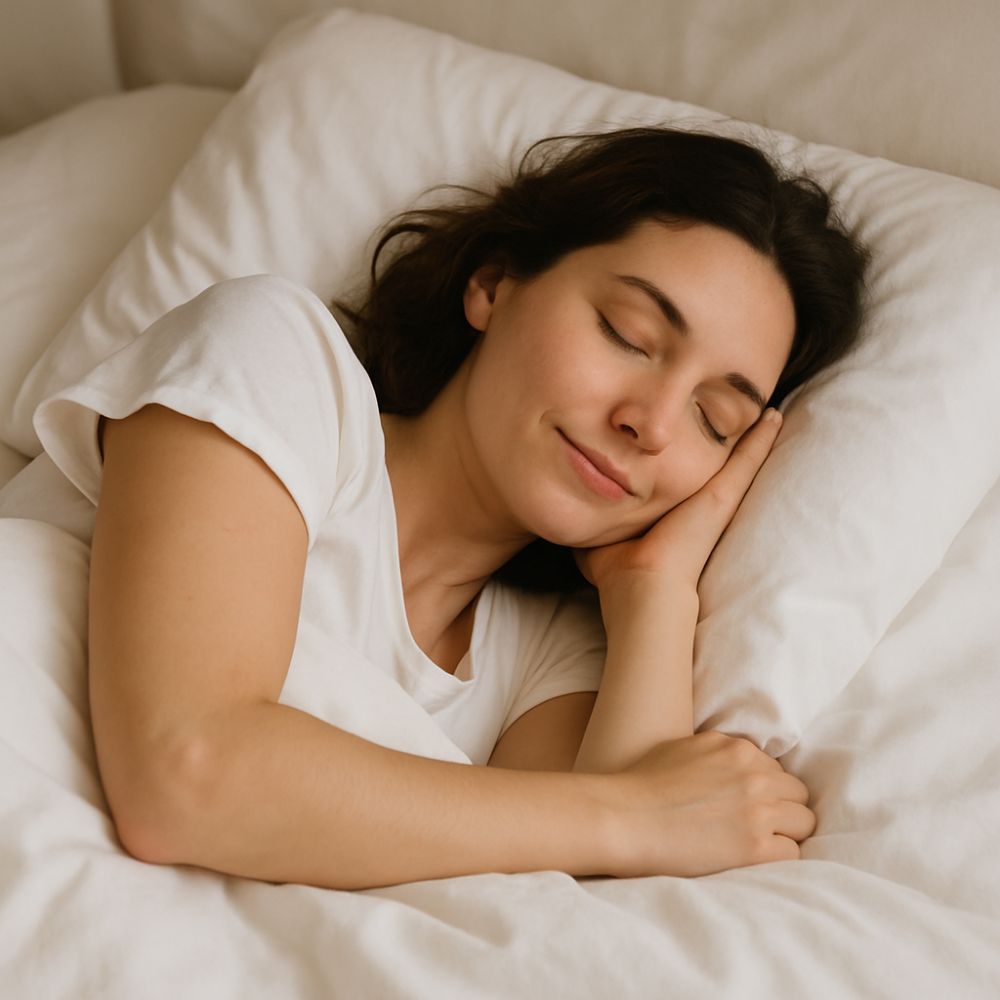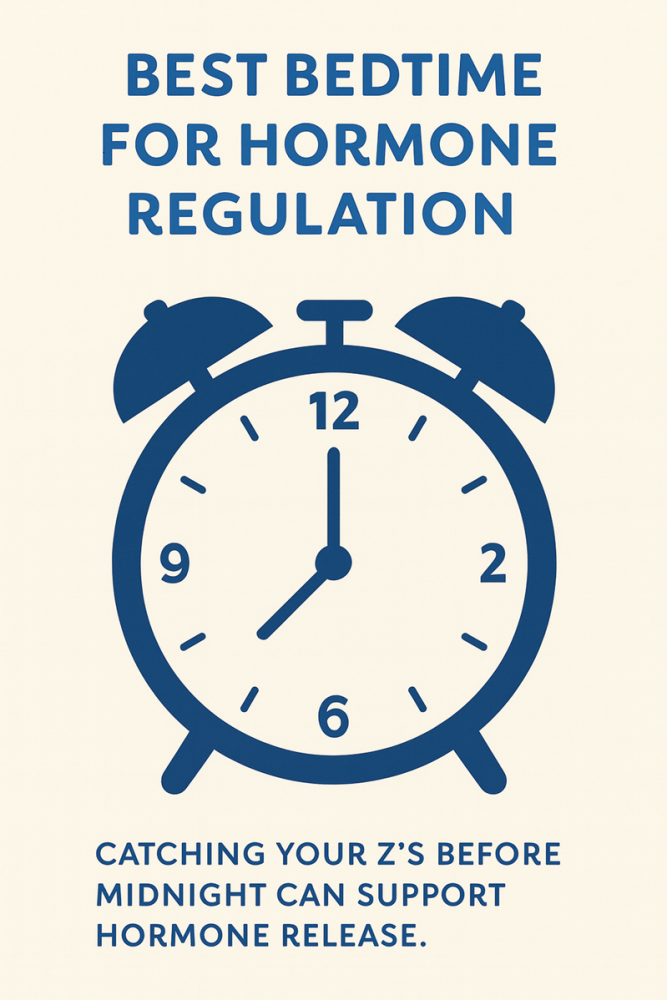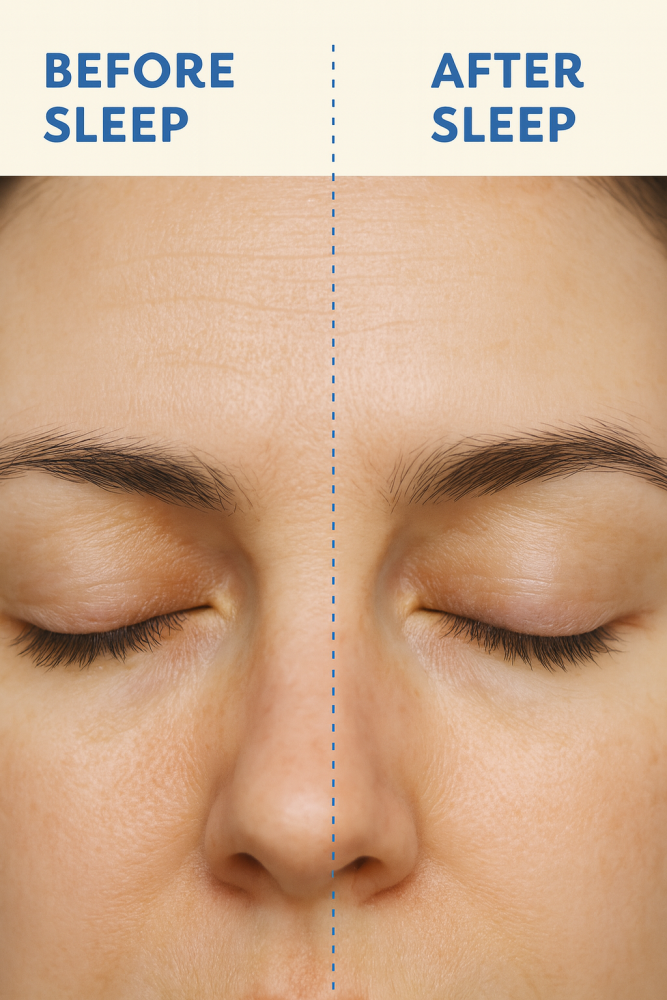If you’ve tried every cream and workout to deal with cellulite but still feel like something’s missing, you’re not alone. Most people zero in on diet and exercise and totally overlook how sleep habits play into dimpled skin and smoothness. I’ve seen firsthand how getting better rest can make a difference, not just in how you feel, but in how your skin looks too. The power of sleep often sneaks under the radar in skincare discussions, but fresh studies show its impact rivals any product in your cabinet.

Why Sleep Matters for Cellulite (and What You’ll Learn)
There’s a real connection between skin texture, including cellulite, and the quality of your sleep. Hormones, inflammation, fat storage—these things are all mixing it up as you toss and turn or snooze soundly. In this article, I’m breaking down how sleep affects cellulite, what science has to say, the best sleep habits for healthier skin, and simple tips you can start right away. Plus, you’ll pick up little-known advice for organizing your sleep space and nighttime routine to support firmer skin.
The Science Behind Sleep and Cellulite Formation

Cellulite develops when fat cells push against connective tissue, causing that classic dimpled look. While genetics and hormones play a role, your sleep routine can shape what goes on under your skin every night.
How Sleep Affects Hormone Production

Hormones like cortisol, estrogen, and growth hormone don’t just help you sleep; they also decide whether your skin stays smooth or gets that lumpy texture. When you sleep well:
- Cortisol stays balanced, helping your body manage stress and fluid levels. High cortisol from poor sleep can break down collagen.
- Growth hormone ramps up during deep sleep, triggering repair and renewal for your skin and tissues—even the cells that keep fat in check under the skin.
- Estrogen gets a chance to regulate, supporting healthy connective tissue (which keeps those fat cells from bulging and causing dimples).
Role in Collagen Synthesis and Skin Repair
All those “beauty sleep” clichés are based on something real. Skin repairs itself as you sleep. Your body makes fresh collagen and new skin cells during the night, which helps keep connective tissue strong and firm. Less sleep? Collagen production dips, and over time, skin gets thinner and less resilient, showing off cellulite even more.
Connection Between Sleep Deprivation and Increased Fat Storage
Short nights mess with your metabolism and appetite hormones like ghrelin and leptin, making you crave carbs and store fat—sometimes right where cellulite likes to hang out (hello, thighs and butt). Studies show people who sleep less are more likely to gain weight, which can make cellulite look more noticeable. This isn’t just about vanity; deeper sleep can actively support your body’s ability to regulate fat storage and stay energized for activity.
Impact on Lymphatic Drainage and Fluid Retention
Quality sleep helps your lymphatic system flush out waste and excess fluids. Poor sleep can slow down this “clean-up crew,” leaving you puffy and making cellulite bumps appear deeper, especially in the morning. Over time, these small differences in water retention add up, further highlighting dimpled areas.
How Poor Sleep Makes Cellulite Worse
Missing out on good rest or keeping a chaotic schedule can stack the deck against your skin. Here’s a closer look at how that happens:
Elevated Cortisol and Stress Response
When you’re sleep-deprived, your body pumps out more cortisol, a stress hormone. Chronically high cortisol breaks down collagen, weakens connective tissue, and leads to fluid retention. You’re much more likely to notice the dimpling when stress and poor sleep team up. For more, check out my jump into stress and cellulite.
Decreased Collagen Production
Without enough deep sleep, your body can’t keep up with collagen repairs. Collagen is what helps keep skin plump and bouncy. Less collagen means weaker skin, which shows off every bump and ripple even more.
Impaired Metabolism and Weight Gain
Lack of sleep increases hunger hormones and lowers the rate your body burns calories. This combo can lead to more fat stored under the skin, which can make cellulite look worse. Skipping sleep also means you’re less likely to feel motivated to move and keep up with exercise. It’s a one-two punch for skin issues.
Poor Circulation and Toxin Buildup
Your blood flow slows down with poor sleep. This affects how well oxygen and nutrients reach skin cells. When circulation lags, toxins and excess fluids build up, sometimes giving that “spongy” look to areas with cellulite. Good circulation at night helps nutrients and oxygen make it to your skin, giving you a fresher, firmer look over time.
Inflammation and its Effects on Connective Tissue
Chronic sleep loss increases inflammation everywhere, including under the skin. Inflamed connective tissue means weaker “netting” that holds fat in place, making dimples more obvious. You may also notice your skin feeling more sensitive or less elastic after too many late nights.
Sleep Positions and Cellulite
While your sleep habits set the stage, the way you sleep can actually impact how your body drains fluids and maintains circulation overnight.
How Sleeping Position Affects Circulation
Some positions make it easier for blood and lymph fluid to move around, helping your body flush waste and bring nutrients to your skin. Lying in one spot for hours with poor circulation can lead to pressure and fluid retention, especially around your hips, thighs, and buttocks—places cellulite likes to show up.
Best Positions for Lymphatic Drainage
- Side sleeping (especially on your left side) can encourage lymph fluid to drain more efficiently by taking advantage of your body’s natural structure.
- Sleeping with legs elevated by placing a pillow beneath your knees can help reduce swelling and support blood flow back to the heart, which may help minimize visible puffiness. Some physical therapists even suggest adding a couple minutes of leg elevation before bed for a bonus boost to circulation.
Positions That May Worsen Fluid Retention
- Sleeping on your stomach can put pressure on your hips and legs, trapping fluids and making skin look puffier.
- Remaining in one position without moving increases the risk of poor circulation and morning swelling. Even shifting sides once or twice during the night assists lymphatic flow.
The Ideal Sleep Schedule for Healthy Skin

When it comes to smooth skin, what matters isn’t just how long you sleep but when and how consistently you do it. Getting your sleep habits in order can bring perks that show up in your skin faster than expected.
Optimal Sleep Duration: 7-9 Hours
Most adults need right around 7-9 hours per night for their skin (and everything else) to bounce back. Regularly sleeping less than 6 hours can raise cortisol levels and impair skin repair, two things that aren’t doing cellulite any favors.
Best Bedtime for Hormone Regulation
Catching your Z’s before midnight can support hormone release. Many experts say the most restorative sleep cycles, when growth hormone and collagen production peak, happen between 10 PM and 2 AM. Hitting the sack during those “beauty sleep” hours helps your body do its thing behind the scenes. If you’re struggling with late nights, try moving your bedtime 10-15 minutes earlier each week instead of a drastic switch.
The Importance of a Consistent Sleep Schedule
Varied bedtimes throw off circadian rhythms and hormone release. Your body performs best when you sleep and wake at roughly the same time every day. Consistency gives your skin the best shot at nightly repair. Inconsistent sleep can even disrupt how your body absorbs nutrients from food, which plays a supporting role in skin texture.
Why These Hours Matter for Cellulite
Aside from just feeling better, research shows that schedules overlapping with deep sleep cycles help keep hormones balanced and metabolism humming. Both make a visible difference in skin texture over time. Women who focus on routine tend to notice not only smoother skin, but also less bloating, better moods, and more energy. It’s all connected.
Practical Sleep Tips to Reduce Cellulite
When people ask me for an easy lifestyle tweak to improve their skin, I almost always start with sleep. It’s super important for nearly every process related to skin health and fat storage. Here’s what works for me and what’s backed by research—and a few bonus tricks for tailoring your sleep to support your beauty goals:
Creating an Ideal Sleep Environment
- Keep your bedroom cool, dark, and quiet; blackout shades and a white noise machine can work wonders if you’re sensitive to streetlights or sounds.
- Invest in comfy bedding and a supportive mattress.
- Limit blue light—phones, tablets, and TV—for at least 30 minutes before sleep. Try switching to audiobooks or gentle podcasts during wind-down time for a soothing alternative.
Bedtime Routines for Better Sleep Quality
- Try gentle stretching, meditation, or deep breathing before bed. These routines calm your nervous system and signal your body it’s almost time for sleep.
- Stick to lowlighting and wind down with a book or calming music.
- A warm shower or bath can help cue your body for sleep and even lower the chance of waking up with a “sleep crease” on your skin.
Foods and Drinks to Avoid Before Bed
Certain foods and drinks can disrupt both sleep and cellulite-fighting efforts. Skip these before bedtime:
- Caffeine (coffee, some teas, chocolate); try to avoid any caffeine after 2 PM if you’re sensitive.
- Simple carbs and sugary snacks, as they boost inflammation and insulin levels at night.
- Heavy, salty, or highly processed meals, which can cause puffiness.
Track down more ideas in my cellulite and diet guide.
Relaxation Techniques for Deeper Sleep
Guided meditation apps, calming teas (herbal only!), or even a few minutes of journaling can ease mental chatter and support deeper rest. This helps lower stress hormones that affect your skin. If you tend to wake up at night, try a few slow, deep breaths to calm your body and settle back down quickly.
The Role of Exercise Timing
Regular exercise is great for fighting cellulite, but the timing can affect your sleep. Try to finish intense workouts at least a few hours before bed. Evening walks or light stretching can actually help you wind down. Check out my best exercises for cellulite for more ideas. Even 10–15 minutes of movement daily—no fancy gear required—can show up in your skin’s texture before you know it.
Additional Sleep-Related Factors
While sleep itself matters, some related habits can give your skin that extra boost or, in some cases, get in the way. Don’t forget to look at the little details that can make your whole routine click.
Sleeping in Compression Garments: Help or Hype?
Some people swear by sleeping in light compression garments (like leggings or shorts designed for lymphatic drainage). These can promote better circulation and reduce overnight swelling, but they’re not a miracle cure. Make sure any garment you try isn’t too tight or uncomfortable; you don’t want to cut off circulation and make things worse.
Nighttime Skincare Routine for Cellulite
A good bedtime skincare routine can help lock in moisture and support collagen production. Look for products with retinol, caffeine, or antioxidants; these ingredients have some research to back them up (just don’t expect overnight miracles). Massaging cream in with upward strokes can boost blood flow, giving your skin a brighter look by morning. Add a dry brushing ritual before your evening shower for a gentle exfoliating effect and to wake up sluggish skin.
Hydration and Sleep Quality
Being well hydrated helps your skin look plumper and support its natural repair. Aim to drink water throughout the day, not just at night, to avoid those late-night bathroom trips that interrupt sleep. Good hydration means less visible cellulite and fresherlooking skin.
The Weekend Sleep Catch-Up Myth
Making up for lost sleep on the weekends doesn’t actually help much. Your body benefits most from regular, nightly rest. Bouncing between late nights and long weekend naps usually messes with hormone rhythms and could even make skin issues worse in the long run. Aiming for consistency—yes, even on weekends—pays off in the mirror.
My Experience and Reader Stories
I love how sleep is one of the easiest things to experiment with. No extra budget or fancy gear required. When I started prioritizing a steady sleep routine, I noticed more balanced moods, less puffiness, and my skin just felt tighter and healthier overall. Many women I talk to see similar changes when they switch to better sleep: more glow, less dimple, better confidence. One reader even shared how switching from a single block of sleep to segmented naps improved her energy and seemed to smooth her legs after a few weeks.
Perfect sleep isn’t always in reach, especially if you’re a new mom, working late shifts, or have a busy household. The goal isn’t perfection—just making small, sustainable changes. Even a few better nights per week can show up in how your skin looks and feels. Progress, not perfection, is what makes a real difference. If you keep a sleep diary, you’ll quickly spot which tweaks make your mornings brighter.
Community forums are full of stories from women who stumbled upon smoother skin by putting more effort into “beauty sleep.” Some tracked measurable changes in waist circumference and reported firmer thighs after focusing on their nighttime winddown for a month or two. It’s proof that simple self-care can ripple through to real skin improvements.
FAQs About Cellulite and Sleep
Does sleeping more really reduce cellulite?
No one’s promising miracles, but better, consistent sleep helps balance hormones, repair connective tissue, and support healthy weight. This can lead to smoother-looking skin over time; think of it as a pillar of your all-in-one skincare routine.
Are there specific sleep positions that improve cellulite?
Sleeping on your side (especially the left) and elevating your legs can support lymph drainage and reduce puffiness. While no sleep position completely fixes cellulite, these methods help reduce morning swelling. Side sleepers often notice less swelling in the ankles and thighs after just a couple of weeks.
How soon can I see improvements in my skin?
It depends. Some people notice less puffiness after just a few good nights, but stronger skin and less cellulite takes weeks to months. Remember, small improvements add up, and sleep works best as part of a holistic routine (with diet, hydration, and movement).
Should I use a special mattress or sleep product for cellulite?
You don’t need to break the bank on sleep gadgets. Focus on what makes you personally comfortable—supportive pillows, breathable sheets, or a mattress topper if your bed feels too hard or soft. Comfort and relaxation matter more than high-end tech.
What’s more important: sleep duration or sleep quality?
Both matter, but quality takes the prize if you have to choose. Even if you’re getting enough hours, restless or interrupted sleep can still disrupt skin repair. Work on both for smoother results.
The Sleep-Skin Connection: Your Next Steps

Sleep is one of the most powerful (and often ignored) tools for smoother skin. Getting quality rest supports the hormones, collagen, and daily rhythms that help minimize the look of cellulite. It won’t erase those bumps overnight, but it can dial down puffiness, support firmer skin, and make every other healthy habit work better.
Improving sleep is doable for most people, whether it’s a new bedtime, a cozy routine, or just making your room a little more restful. I encourage you to start small; pick one or two tips from above and see what changes for you. If you’re pairing better sleep with balanced eating and activity, you’re already on the right track to smoother, healthier skin. Sometimes, the difference between tired, uneven skin and a smoother, glowing look is just a few restful nights away.
Ready to Take Your Cellulite-Fighting Routine to the Next Level?
Now that you understand how crucial sleep is for smoother skin, it’s time to combine it with the other proven strategies that actually work. While better sleep habits will definitely help, the fastest results come from a complete approach.
Want to discover the complete system that’s helped thousands of women finally win their battle against cellulite? Check out this guide on the 5 Critical Keys to Kill Your Cellulite – including the one secret that most “experts” never tell you about.
And if you’re serious about getting rid of those dimples for good, don’t miss my detailed review of Joey Atlas’ Symulast Exercises – the only workout program specifically designed to target the muscle fibers responsible for cellulite. These aren’t your typical squats and lunges; they’re precise movements that work where it counts.
Sweet dreams and smoother skin await!
Leave a Reply